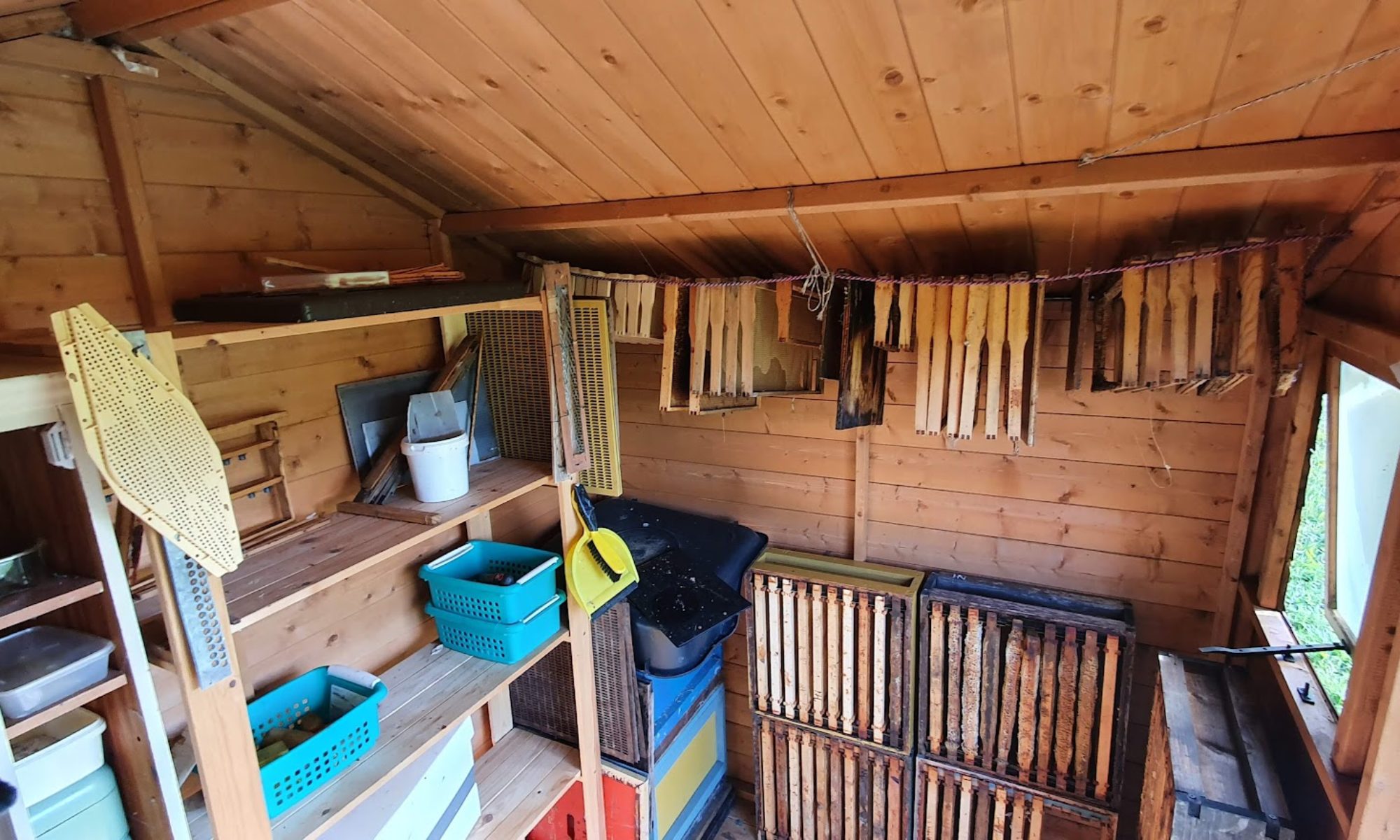piece of metal mesh over bee entrance with a couple of bees climbing out
caged door
Oh the fun with mouse-guards and the weather.
The weather has been so strange recently, I put mouse-guards on about 6-8 weeks ago, thinking that the flow was well and truly over, and the bees would be bedding down for winter. Oh, little did I know the weather had other plans. The wasps were still about, the weather was getting warmer, nature was being thrown off course. Flowers flowering about 5 months early, bees trying to forage and using up stores flying. All they seemed to be bringing back was lots and lots of pollen, they weren’t taking sugar syrup down (because it wasn’t that warm to cure it?) and stores were dwindling.
Anyway, switch gear, this is really about the mouse guard. Mouse guards are to stop a winter problem; mice getting in the hive in winter and munching honey and living on the floor (and destroying the woodwork to boot, grrr).
Suicidal you might think? Entering a bee hive of thousands of bees and taking their stores. Well bees are often too busy forming a ball and trying to keep warm enough to stay alive to bother with the intruder. If they are anything like the bees in my yellow hive they are more likely to cuddle the mouse or just walk past it, rather than get angry and sort it out with a lethal attack. These yellow bees, they look lovely, they are very easy to manage, but they seem so lazy, it makes you want to poke them and tell them to get on with it. You know if you do they will just say ‘Manyana” and roll over to sleep.
So, what you have to do is fit a mouse guard. There are a selection of options here, but largely based on the fundamentals of ‘mice are very good at getting in small spaces’. There are commercial options of nice purpose built strips with punched holes, a grill or a variety of others. Me, being of the “you want how much for that!” mentality, noticed some metal mesh hanging around the place (yes I hoard stuff, a lot) that seemed to fit the bill. Big enough for bee entry, small enough (hopefully) to stop mice (seriously, they get in anywhere, they can squeeze thought an air brick).
The mesh / gauze found was very useful, scrap – so getting it wrong was no problem, cuttable – so any shape or size was available, mould-able – so it could be shaped, compressible – so the gaps could be made smaller or larger. Early trials included squeezing the gap down smaller (a bit too small for bee entry in some places, oops) and applying the mesh flat to the entrance. This resulted in some bee bearding, where the bees end up with a traffic jam trying to get in, and a relatively constant cluster of bees over the mesh. This had a visual defence appearance to wasps (I guess), but also a lot of targets for them too. I think it also caused issues for landing bees coming in with stores, having to land on other bees to get in.
The current solution/trial is to have the mesh not compressed, for easier access, and also having the cage/mesh convex/bulging away from the entrance, allowing more entrances / easier transmission / increased vectors of approach for incoming bees.
I think that next year I will be using this material to enable the bees to defend from wasps a bit better, by making a tunnel for entry, so attacking / robbing insects will have to run the gauntlet though a tube with mesh walls, allowing the defending bees to sting attacker from the safety of the other side of the mesh.
Wacky idea, well I read something similar on someone elses blog, but now I can’t find it. Or maybe I thought it up in a dream… ?
Anyways, that’s all for now, I have to go an make prototype 2 for a woodpecker protection cage…
